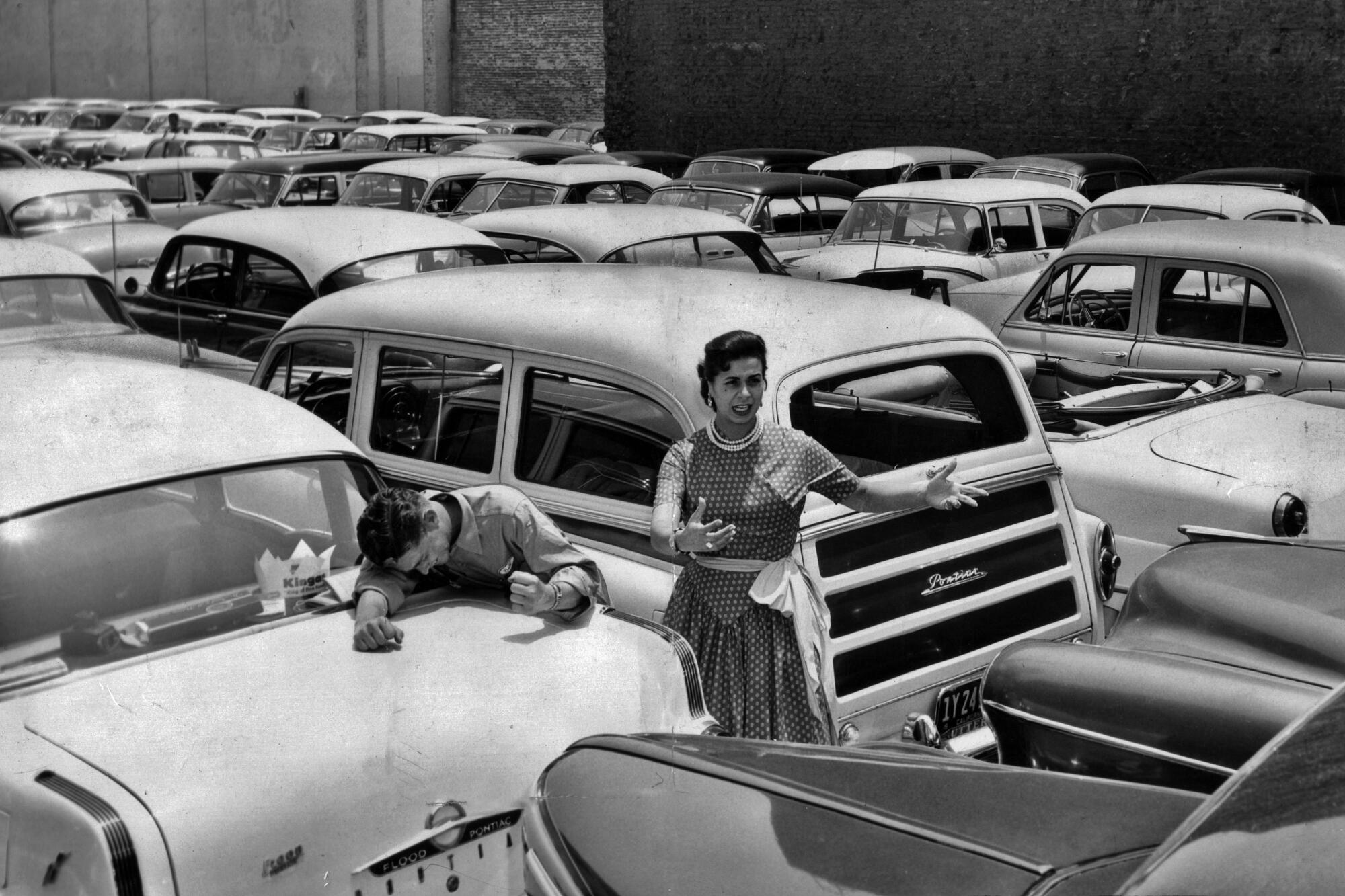
On the Shelf
New Books on Car Culture and Housing
Paved Paradise: How Parking Explains the World
By Henry Grabar
Penguin Press: 368 pages, $30
Common Ground: Multifamily Housing in Los Angeles
By Frances Anderton
Angel City Press: 208 pages, $50
If you buy books linked on our site, The Times may earn a commission from Bookshop.org, whose fees support independent bookstores.
In one of my favorite micro-genres of TikTok reveal, a camera sweeps through a hotel room to a curtain that is dramatically parted to expose a breathtaking view of ... a parking lot. “I’m so grateful to travel for work,” writes @mollygoodridge in one such post (3 million views and counting), showing a dire lot fronting a scraggle of bare trees — all set to the soaring vocals of “Out There” from Disney’s “The Hunchback of Notre Dame.”
“I’m sobbing,” reads one response. “Such beauty.”
That particular video was shot in Ohio, but it could have been filmed in just about any business loop in the United States. I stayed in one such place during a recent reporting trip to Arizona: a three-story inn tucked behind a Circle K and a gas station. A jaunt to the Waffle House across the street required a peregrination across a hot ocean of tarmac. The neighboring residential area didn’t offer much respite: The streets were wide, the sidewalks a mere suggestion, and many of the properties stood behind driveways. Examine a satellite image of the area and you’ll find buildings drowning in the dark maw of automotive infrastructure.
Parking has come to define the landscape of U.S. cities: curb parking, parking structures, the bleak lots that moat Walmarts and Home Depots. It has also relentlessly whittled residential architecture into its current form: the single-family home whose facade is dominated by behemoth garage doors, or the podium apartment building whose most noticeable connection to the street frequently isn’t a front door but rather the entrance to a partially submerged garage.
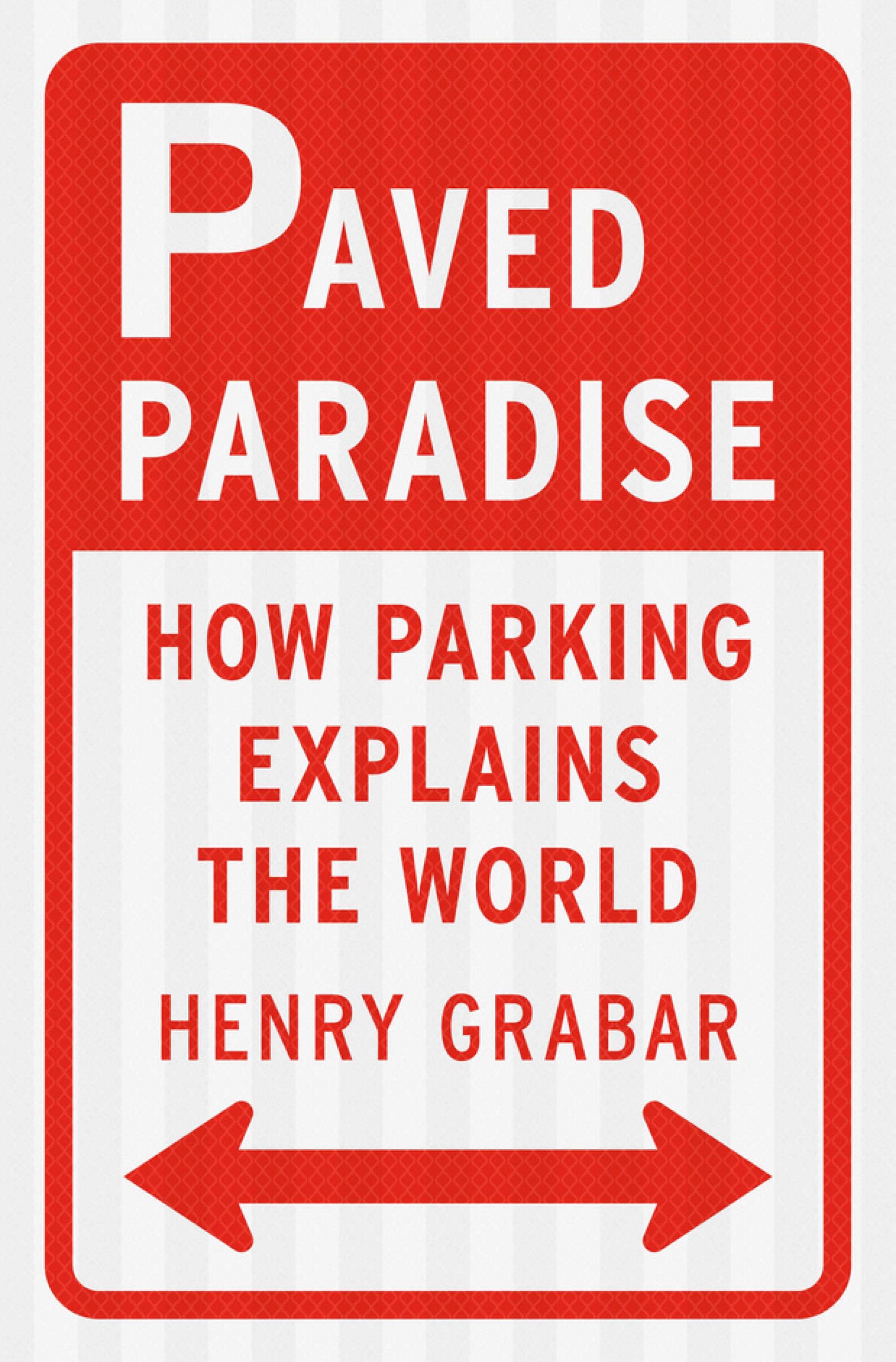
In his recent book, “Paved Paradise: How Parking Explains the World,” Henry Grabar, a staff writer for Slate, has crafted a page-turning history of parking that looks at how the car, and the policies that have aided and abetted its use, have shaped — one might say distorted — our cities and homes. “Sprawl,” he writes, “is built on a foundation of law.” Grabar goes on to explore how those laws have historically favored cars; when the programmers of SimCity devised their video game, for instance, they observed many city-planning rules but ditched the parking mandates. Otherwise, too much space would have been eaten up by parking.
In ‘Paved Paradise,’ Henry Grabar takes on the automobile’s profound effect on L.A. and the world through the particular lens of parking.
Grabar’s book is very enjoyable — covering such wildly entertaining tangents as parking crime, parking rage and even parking in film. (In his review, published in May, The Times’ Russ Mitchell described the book as “a romp, packed with tales of anger, violence, theft, lust, greed, political chicanery and transportation policy gone wrong.”) Grabar also charts the influence of “parking rock star” Donald Shoup, a professor emeritus of urban planning at UCLA, whose wildly popular 2005 book “The High Cost of Free Parking” helped dismantle the idea that established parking requirements were hard science. (Many cities are overloaded with parking that is inefficiently used.)
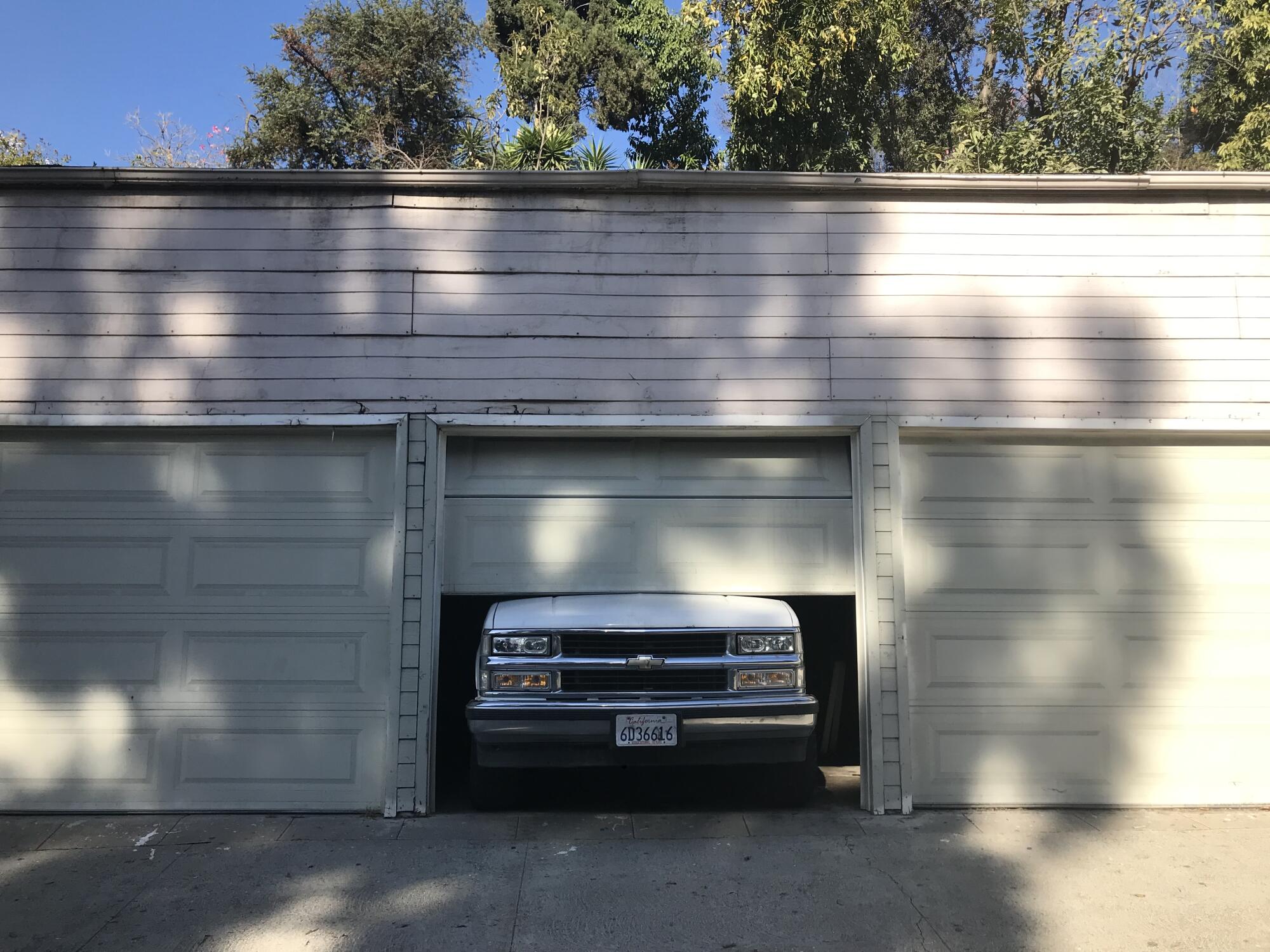
Ultimately, I’ve been most absorbed with the chapters Grabar devotes to the intersection of housing and parking — and the ways in which parking has shaped not only the design of our homes but also our ability to build them to begin with. Parking lots and garages — especially underground parking — consume vast amounts of land and are expensive to build; as a result, they send construction costs skyrocketing. This makes it near-impossible to produce the sorts of small buildings that might be affordable to middle-of-the-road wage earners in urban areas like Los Angeles.
“Parking requirements helped trigger an extinction-level event for bite-sized, infill apartment buildings like row houses, brownstones, and triple-deckers,” he writes. “The production of buildings with two and four units fell more than 90 percent between 1971 and 2021.”
Why is there so much “luxury” development everywhere? It pays for the parking.
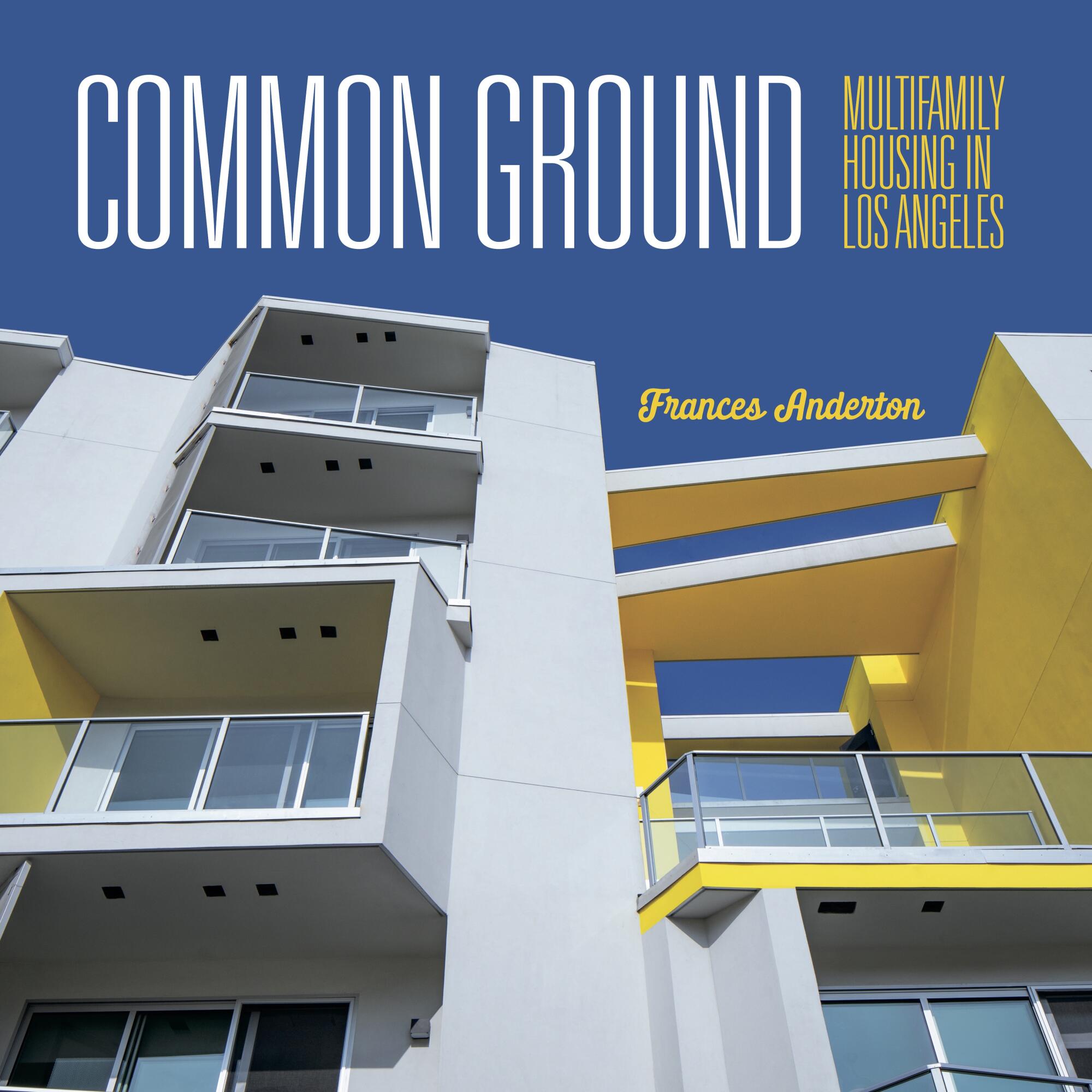
I read Grabar’s book in tandem with Frances Anderton’s “Common Ground: Multifamily Housing in Los Angeles,” published late last year by Angel City Press. A former host of KCRW’s “DnA: Design and Architecture,” Anderton built her project out of a series of radio reports, “This Is Home in L.A.,” that examined the state of residential design in the city starting in 2018.
Part coffee-table book (it features plenty of great photographs) and part breezy history, “Common Ground” takes the reader on a century-long tour of a residential style not generally associated with Los Angeles: multifamily housing. From the aparthotels and bungalow courts of the 1910s and ’20s through the public housing projects and dingbat apartment buildings of mid-century to the towers and backyard ADUs of today, Anderton offers an overview of L.A.’s most significant designs.
Naturally, parking rears its head.
Too many new buildings have too many parking places, by law. The city should reduce the amount of land devoted to cars, so more housing can be built.
Onerous parking mandates, as Anderton and Grabar both note, have killed production of some of L.A.’s most distinctive architectural types — including the bungalow court. Architect Irving Gill not only translated Mediterranean forms into a modernist idiom in the design of his graceful court apartments (such as his celebrated Horatio West Court in Santa Monica, completed in 1919); he also saw them as a way of creating housing for a group generally ignored by architecture: workers. Half a century later, novelist Charles Bukowski famously set his novels in dilapidated Hollywood courts that still clung to life.
The style disappeared after 1934, when new rules mandated one parking spot for every unit in a multifamily project. This would have required more land and made an inexpensive form of housing more expensive to build. Adios, courts. A similar fate befell the dingbat in 1964, when L.A. once again increased its parking minimums.
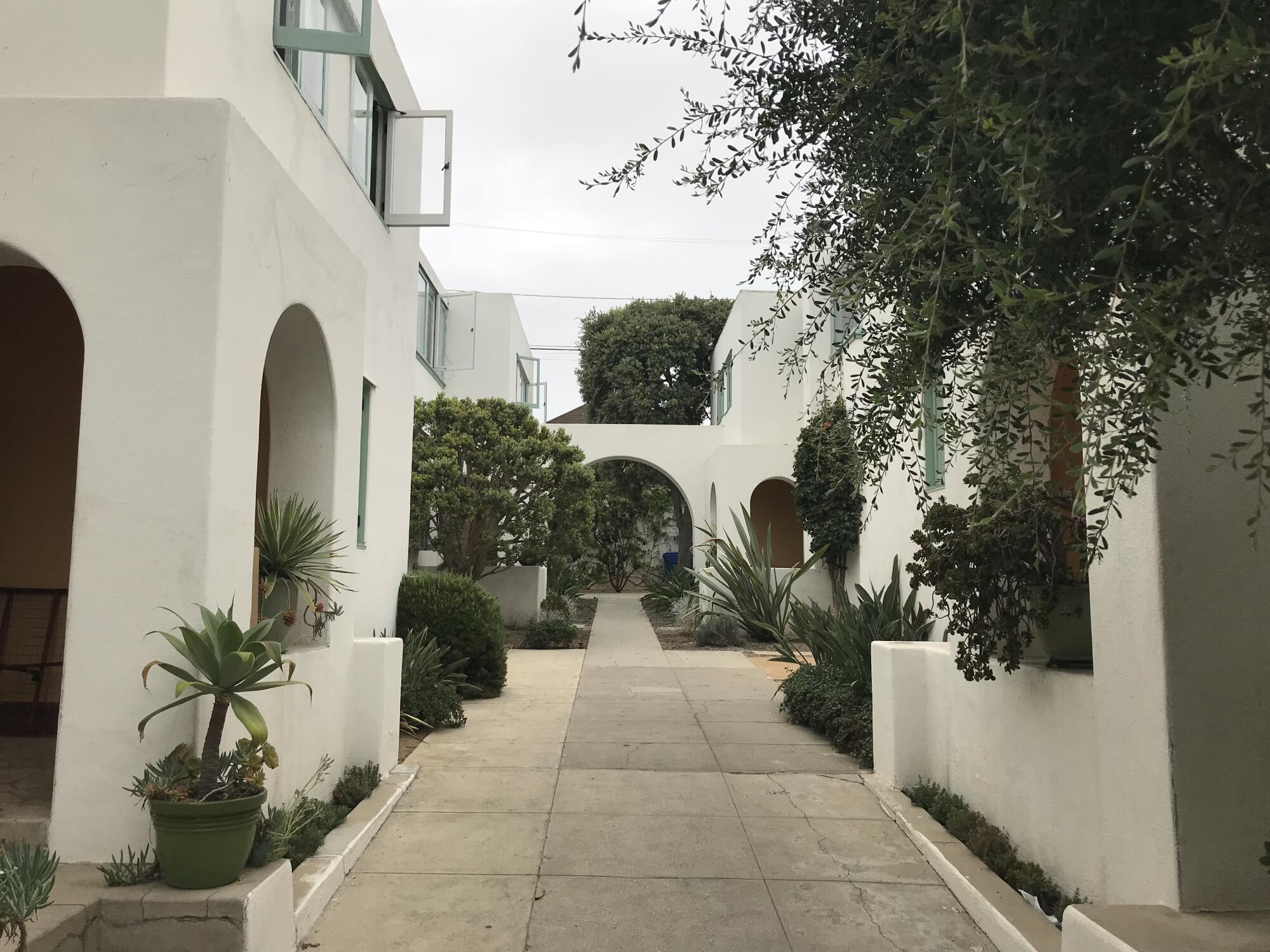
For decades, it has been practically impossible to build this scale of housing and have it pencil out. But that is changing.
Grabar’s book tracks a rising public backlash — instigated by researchers such as Shoup — calling for an end to arbitrary parking minimums. In September, Gov. Gavin Newsom signed a bill that banned cities from setting parking mandates for new developments near public transit. A month later, Culver City abolished all minimum parking requirements.
Transit advocacy groups have been pushing the City of L.A. to do more. Michael Schneider, a founder of Streets For All, noted in an op-ed in The Times in January that San Diego saw a rise in affordable housing development after it dropped parking minimums. (Which, to be clear, does not eliminate parking, but simply allows developers to determine how much parking to include on a given project.)
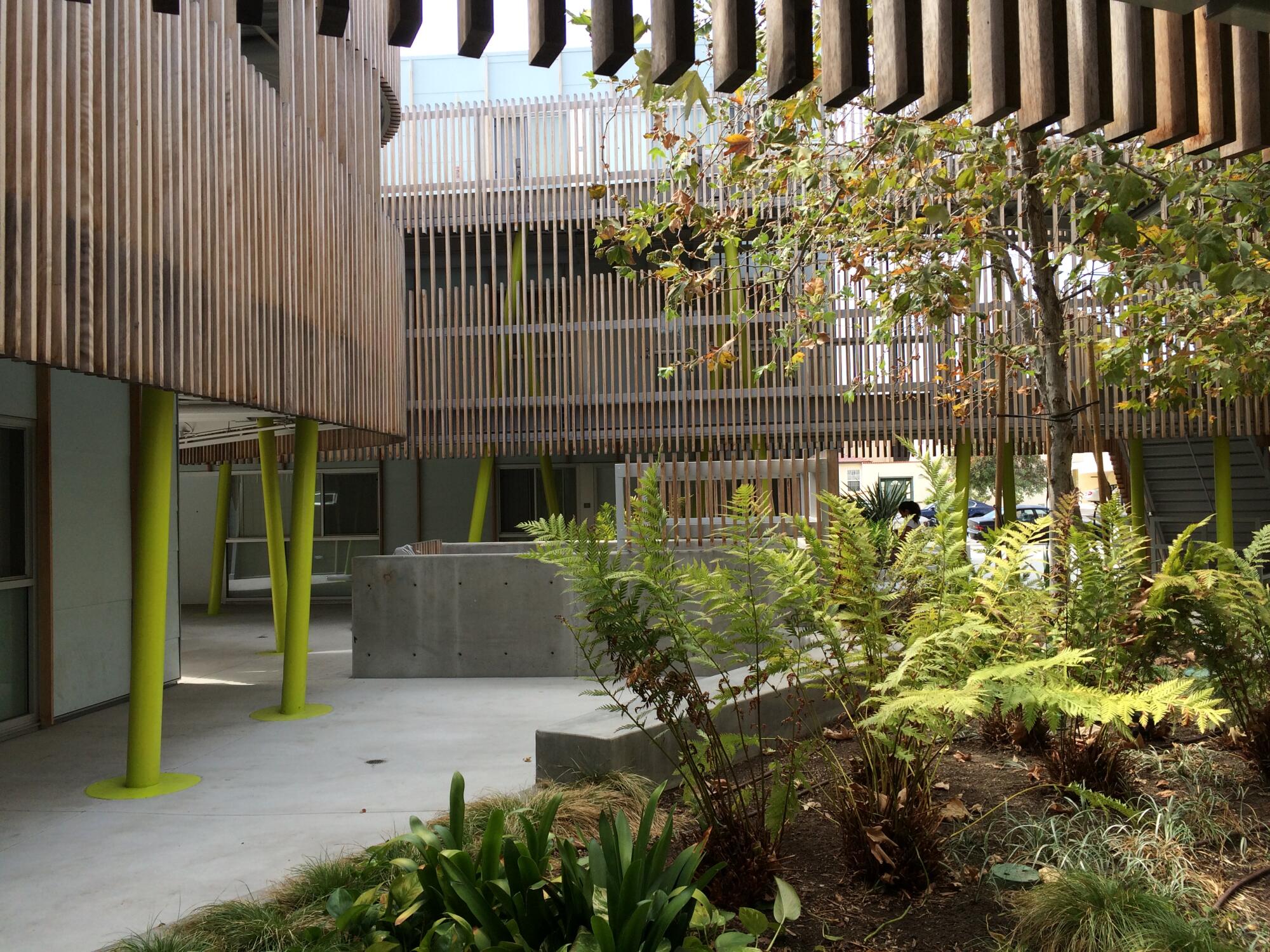
The shift is overdue.
One of the most heartbreaking passages in Grabar’s book features a conversation with a Southern California affordable housing developer who notes that public officials in charge of approvals processes will ask infinite questions about parking but nothing about about the quality of life of the tenants. “We care more about housing for our cars than we care about housing for ourselves,” she says. “Period.”
Walk through the current exhibit at the Architecture + Design Museum in downtown Los Angeles and you will find some wild visions of a future L.A.
And that’s where Anderton’s book comes in. “Common Ground” offers an architectural road map for what could be built for the post-parking era — not just the models of the past, but a wave of contemporary designs by architects such as Lorcan O’Herlihy Architects, Brooks + Scarpa, KoningEizenberg and Kevin Daly Architects, among others, who have found ways of incorporating courtyards, green space and other shared outdoor areas into affordable housing developments that put people first, cars second.
“In recent years in Los Angeles, there has been a lot of talk about the housing crisis,” writes Anderton, “but less talk of the housing itself.”
Anderton and Grabar’s books offer intriguing histories, but they articulate possibilities for the future too. We can aspire to more than acres of ugly parking when we pull back the curtain windows.
More to Read
Sign up for our Book Club newsletter
Get the latest news, events and more from the Los Angeles Times Book Club, and help us get L.A. reading and talking.
You may occasionally receive promotional content from the Los Angeles Times.












